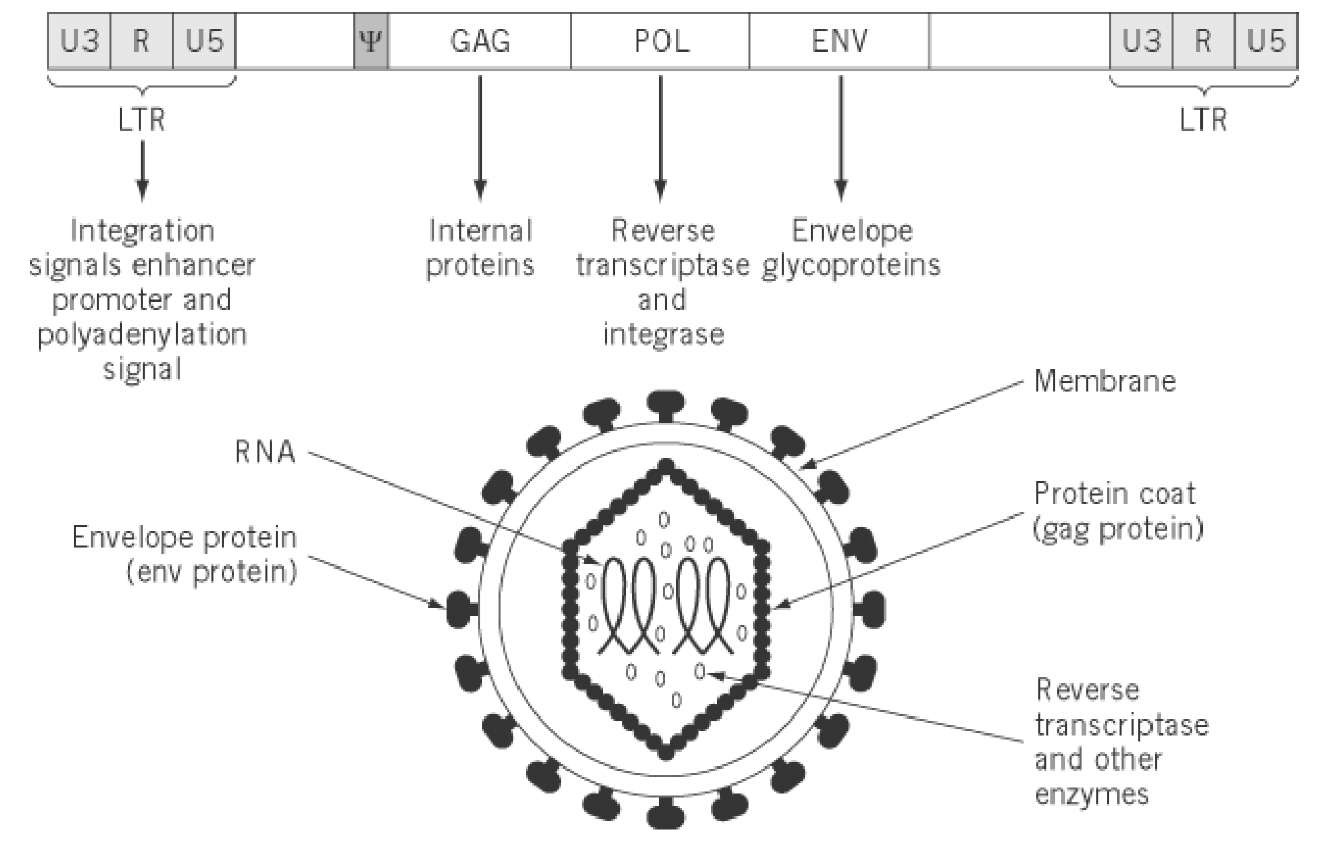Retroviruses
Retroviruses Assignment Help | Retroviruses Homework Help
Retroviruses
RNA tumor viruses are called oncornaviruses because they are oncogenic and contain RNA. They are classified as retroviruses because the RNA viral genome forms a DNA copy, a reversal of the normal DNA→RNA synthesis. They have thus properties of both DNA and RNA viruses. The retroviruses exist in two distinct forms. The DNA genes are integrated into the chromosomal DNA of the host and the infectious virus particles contain RNA genes.All retroviruses do not cause cancer. The terms ‘retrovirus’ and ‘oncornavirus’ are therefore not synonymous. Among the RNA viruses only the retroviruses are known to cause cancer.
Oncornaviruses show alternation of generations and exist in two forms, as RNA particles and as host-integrated DNA genes. The infectious particle contains RNA genes. The provirus form exists as DNA genes integrated into the host chromosomal DNA. Complementary RNA is synthesized from RNA by the enzyme reverse transcriptase.
Viral proteins. The oncornavirus particle (virion) consists of a nucleoprotein core surrounded by a core shell. The virion is enclosed in an envelope derived from the plasma membrane of the host cell. The core and the core shell appear as an electron-dense nucleoid in thin sections examined by the electron-dense nucleoid in thin sections examined by the microscope. The envelope has spikes or knobs consisting of virus-coded glycoproteins. The glycoproteins recognize specific receptor call on the host cells and thus help adsorption of the virus during infection.
RNA. The RNA complex has a sedimentation value of 60-70S and is known as 70S RNA. It consists of two closely related or identical 35S subunits linked at their 5’ ends, plus smaller RNA species from the host cell.
Oncornavirus replicative cycle. The replicative cycle of an oncornavirus takes place in the host cell.
A. The oncornavirus is adsorbed on a specific receptor on the surface on the host cell and then penetrates the cell membrane. The virus particle is uncoated and the RNA released into the cytoplasm of the cell.
B. The RNA synthesis provirus DNA in the cytoplasm with the help of primer-dependent reverse transcriptase. This enzyme cannot form new DNA chains de nova. It can only extend originally existing chain.
C. The RNA of the DNA-RNA hydrid is hybrolysed by the RNase H activity of reverse transcriptase, leaving only the DNA strand.
D. The DNA strands acts as a template for the synthesis of a second DNA strand to form ds DNA. The enzyme now functions as a DNA-dependent DNA polymerase. Actinomyin C inhibits this reaction, thus providing a method for preparing pure ssDNA.

E. The provirus dsDNA assumes a closed circular form. This form helps integration into the host DNA because only a single recombinational event is required.
F. The provirus DNA is integrated into the DNA of the host chromosome, and becomes a part of host genome. It is not known whether the site of integration is random or specific in both viral and host DNAs, or whether the site of integration affects the expression of viral genes.
G. The integrated provirus DNA may remain latent or may transcribe RNA. In the former case the host cell is not affected by the virus. RNA for the progeny viruses as well as mRNA for protein synthesis.
H. Maturation of the virus occurs at the cell surface and the particles are budded off from the plasma membrane. Condensation of the nucleoid takes place beneath the cell membrane.
For more help in Retroviruses please click the button below to submit your homework assignment.